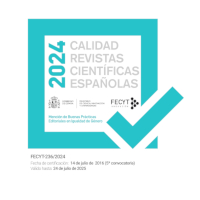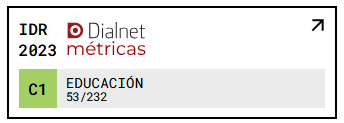Metodología PBLE como guía del proceso de aprendizaje en Ingeniería. Primeros pasos en la UR
DOI:
https://doi.org/10.18172/con.540Keywords:
Learning, teaching innovation, engineering teaching, PBL, PBLEAbstract
This work presents some of the actions that a team of the Mechanical Engineering Department of the University of La Rioja develops as conceptual design specification of the formative method. It is a proposal of implantation, which will include a plan of communication and risks, to propose to the University users an alternative method in agreement with the European tendencies that go away in this sense during last years. The selected approximation for the proposal of implantation is based in the PBLE (Project Based Learning Engineering) methodology.Downloads
References
ALBANESE, M. y MITCHELL, S. (1993). Problem-based learning: A review of the literature on its outcomes and implementation issues. Academic Medicine, 68 (1), 52-81.
ANGELO, T. y CROSS, P. (1993). Classroom Assessment Techniques: A Handbook for College Teachers. San Francisco: Jossey Bass Publisher.
BANKS, J.C. (1997). Creating & Assessing Performance-Based Curriculum Projects: A Teacher’s Guide to Project-Based Learning & Performance Assessment. Cats Publications.
BIGGS, J.B. (2002). Aligning Teaching and Assessment to Curriculum Objectives. LTSN Generic Centre at http://www.ltsn.ac.uk.
BLUMENFELD, P.C.; SOLOWAY, E.; MARX, R.W.; KRAJCIK, J.S.; GUZDIAL, M. y PALINCSAR, A. (1991). Motivating project-based learning: Sustaining the doing, supporting the learning. Educational Psychologist, 26, 369-398.
CAWLEY, P. (1997). A problem-based module in mechanical engineering, en BOUD, D. & FELETTI, G. The Challenge of Problem-based Learning. 2nd Edition. London: Kogan Page.
CROSS, P. (1991). On College Teaching. Journal of Engineering Education, 82 (1), 9-15.
DELISLE, R. (1997). How to Use Problem-Based Learning in the Classroom. Alexandria: Association for Supervision and Curriculum Development.
DUCH, B. (Ed.) (1995). What is Problem-Based Learning? About Teaching: A Newsletter of the Center for Teaching Effectiveness, 4. En http://www.udel.edu/pbl/cte/jan95-what.html.
FARNSWORTH, C.C. (1994). Using computer simulations in problem-based learning. Proceedings of the Thirty-fifth ADCIS Conference, 137-140. Nashville: Omni Press.
HOFFMAN, B. y RITCHIE, D. (1997). Using Multimedia to Overcome the Problems with Problem Based Learning. Instructional Science, 25 (2), 97-115.
HOWARD, K. y SHARP, J. (1996). The Management of a Student Research Project. 2nd Edition. Aldershot: Gower.
LEWIS, V. y HABESHAW, S. (1997). 53 Interesting Ways of Supervising Student Projects. Bristol: Technical and Educational Services.
MCKEACHIE, W. y GIBBS, G. (1999). Teaching Tips: Strategies, Research, and Theory for College and University Teachers. 10th ed. Boston: Houghton Mifflin.
MEHTA, S. y NEM, S. (1998). Computerized Assessment Technique for Large Classes. Journal of Engineering Education, 87 (2), 167-172.
QIN, Z. y JOHNSON, D.W. (1995). Cooperative Versus Competitive Efforts and Problem Solving. Review of Educational Research, 6 (2), 129-143.
STEPIEN, W.J. y GALLAGHER, S.A. (1993). Problem-based Learning: As Authentic as it Gets. Educational Leadership, 50 (7), 25-8.
TOOHEY, S. (1999). Designing Courses for Higher Education. Buckingham: SRHE/Open University Press.
WOODS, D. (1994). Problem-based learning: how to gain the most from PBL. Ontario: Waterdown.
WOODS, D. (1996). Problem-based Learning: resources to gain the most from PBL. En http://www.chemeng.mcmaster.ca/pbl/pbl.htm.
Downloads
Published
How to Cite
Issue
Section
License
The authors retain copyright of articles and authorize Contextos Educativos. Revista de Educación the first publication. They are free to share and redistribute the article without obtaining permission from the publisher as long as they give appropriate credit to the editor and the journal.
Self-archiving is allowed too. In fact, it is recommendable to deposit a PDF version of the paper in academic and/or institutional repositories.












